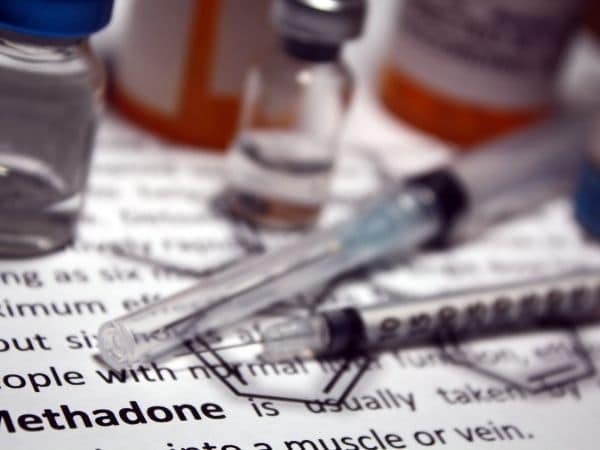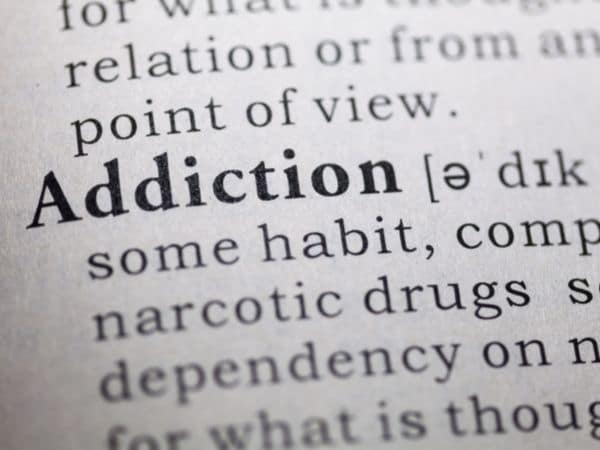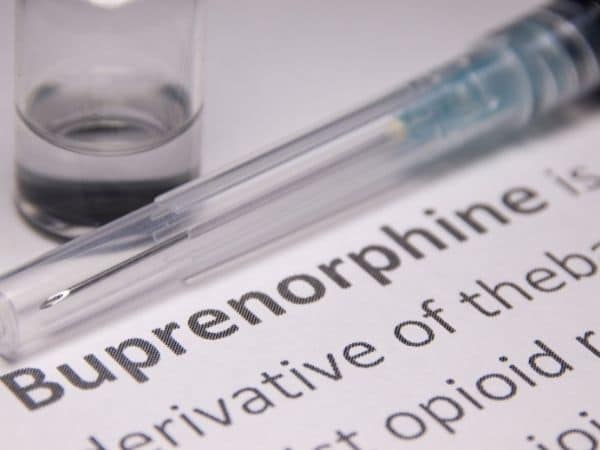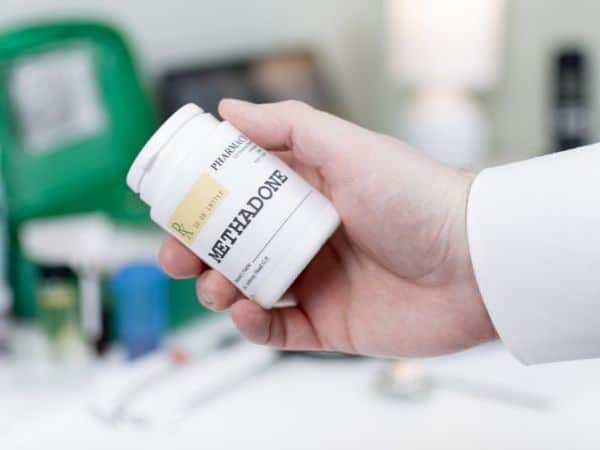Methadone detox is one of the treatments usually provided in rehab centers for opioid addiction. And sometimes, opioid addicts, who are on their way to recovery, tend to abuse this prescription drug since it’s also highly addictive, maybe even more than the original opioid that got them there in the first place.
Getting people out of methadone addiction may require more effort. If you or your loved one is considering taking the first step towards recovery, then this is for you. It helps to know all the pertinent information needed to prepare for this recovery journey.
Drug Abuse and Methadone
Drug abuse has been one of the constant issues in American society. In 2017, about 38% of adults battled an illicit drug use disorder. Drug addiction affects society in many ways, like increasing crime rates and adding unnecessary burdens on the healthcare industry. It also strains family and personal relationships because of the addiction.

Drug abuse is a broad term since there is plenty of data about addiction. However, those data also differ based on the type of drug being abused. And one of the most notable types of drug being abused today is methadone, a highly regulated opioid.
What is Methadone?
Methadone is an opioid and pain medication primarily used for pain management. However, it can be highly addictive, especially when taken in high doses. And it’s due to its highly addictive nature that methadone detox is one of the common treatments being offered today.

Also, because it has such a high potential for abuse, methadone is regulated by several agencies like the Food and Drug Administration (FDA), Department of Health and Human Services (HHS), and Drug Enforcement Administration (DEA).
How Does Methadone Work?
Methadone is widely known for treating opiate addiction. It’s been in use for three decades thanks to its efficiency in mitigating opioid symptoms of withdrawal. In addition, the drug is used to reduce drug cravings and curb addiction. Unlike other opioids like heroin and morphine, methadone doesn’t create euphoric feelings for the drug user. It will block the pleasurable effects of other opioids. However, the drug has sedative effects, which many find enjoyable.
Methadone works by binding to specific receptors in the brain. That’s also the same process as to how other opiates, like heroin, work. It is a long-acting drug, meaning it stays in the body longer, usually around one to three days. As a result, this feature helps in blocking the euphoric effects of other opiates. It also reduces the severe symptoms of withdrawal that addicts experience with opiates.
When methadone is being used to reduce the withdrawal symptoms of other opiates. Like heroin, it can remain in the body for a long time and can build up quickly. That’s what makes overdosing from methadone highly probable. Therefore, recovering patients who are prescribed methadone should be careful with the dosage they ingest. The patient should carefully follow the prescribed dosage of their physician.
Methadone’s Role in Drug Treatment
For many people struggling with opioid addiction, what’s meant to be the way out only results in a more complicated situation. This is the case with using methadone to treat opioid addictions. Methadone may be a prescription medication but it is still an opioid and therefore subject to abuse. So while using it to overcome drug addiction and mitigate symptoms of withdrawal, it’s possible to become hooked on the methadone and begin another phase of addiction. That’s why many rehab clinics and addiction treatment centers offer methadone detox treatments.

What’s worse is that the methadone withdrawal process may cause severe symptoms. As such, drug users who would like to take the first step to recovery are usually advised to go through the detox process in a medical facility. The length of the methadone detox process will also depend on the severity and duration of the drug user’s addiction especially if it involves a mix of substance abuse and mental health problems.
Methadone Withdrawal Symptoms
The withdrawal symptoms of methadone are somewhat similar to other opiates, like heroin. However, drug users may find the methadone symptoms of withdrawal a bit more challenging because the drug lingers in the body a few days longer.
Typically, these symptoms resemble flu symptoms like:
- Fever
- Chills
- Sweating
- Muscle aches and pains
- Hallucinations
- Nausea
- Vomiting
- Diarrhea
- Insomnia
- Paranoia
- Anxiety
- Tiredness
- Restlessness
- Stomach cramps
Other Alternatives
Although methadone is the most widely-used opioid in medication-assisted treatments, there are other alternatives to methadone. Two other long-acting opioids are considered–buprenorphine and levomethadyl acetate (LAAM).
Buprenorphine

Buprenorphine is an opioid analgesic that is also capable of blocking opioid receptors in the brain. It seems that buprenorphine is safer than methadone when it comes to overdose. It has been the subject of past and recent research. And applications are submitted for approval of use in the US.
Levomethadyl (OrLAAM or LAAM)
Another opioid analgesic that is being investigated as another alternative for methadone is levomethadyl acetate. Its most significant advantage is its longer half-life of ninety-two hours. Methadone’s half-life is only twenty-four to thirty-six hours. That means it can ease withdrawal symptoms longer and a more extended period between ingesting the medication.
Research has also found that LAAM can be as effective as methadone in treating opiate addiction. This research compared methadone, LAAM, and a control group. Researchers found that 80mgs of LAAM administered three times a week is just as effective as 100mgs administered daily. Furthermore, researchers compared low-dose methadone administered daily and low-dose LAAM administered three times a week. And they found that those who used LAAM had better outcomes than those who used methadone. LAAM subjects had less drug abuse and stayed in treatment more.
Recovering opiate addicts should be given plenty of options when it comes to medication-assisted treatment programs. Although methadone is the most widely used today and has been for a long time, other medications that can be better options are available or are being studied. And that can be of great benefit to patients. Though the approval of some drugs to be used is still on its way, it’s still a breakthrough that’s worth looking forward to.
Timeline of Withdrawal
Methadone detox symptoms usually appear around twenty-four to thirty-six hours after a drug user quits. The duration of the process will vary from person to person, depending on the severity and length of the user’s addiction history. The detox process may last anywhere between two weeks to six months. It’s expected that the symptoms are worse in the first week of withdrawal.
Effects of Methadone
You can easily notice the effects of methadone on any person. Here’s a quick idea of what happens when you use this substance.
30 Hours
In the first thirty hours since the user stopped using the drug, they may feel the following symptoms:
- Sweating
- Fatigue
- Anxiety
- Insomnia
- Watery eyes
3 to 8 days
After three to eight days, these symptoms may begin to peak:
- Drug craving
- Diarrhea
- Cramps
- Depression
- Muscle aches
- Nausea
- Goosebumps
9-15 days
After nine to fifteen days, methadone withdrawal symptoms may begin to subside. However, some of these symptoms may continue:
- Drug cravings
- Depression
- Irritability
- Diarrhea
15 days and more
Beyond fifteen days, these are the typical methadone treatment symptoms of withdrawal that may persist for weeks:
- Insomnia
- Fatigue
- Anxiety
- Drug cravings
PAWS
Some may experience Post-acute withdrawal symptoms (PAWS) after the methadone detoxification withdrawal process. PAWS may persist for months and up to a couple of years. Some of the PAWS may include:
- Insomnia
- Irritability
- Anxiety
- Depression
- Inability to concentrate
These methadone detox symptoms can be intense. That’s why drug users should be in a medical facility when they’re undergoing detox.
Abruptly quitting is more likely to bring about more severe withdrawal symptoms. Therefore, most physicians would recommend tapering the dosage of the methadone used little by little until such a time where the user doesn’t need the drug anymore.
Methadone Addiction Treatment Program
Treating methadone addiction will entail the guidance of healthcare professionals specializing in addiction. The treatment is not a one-size-fits-all type because oftentimes, abusers also use other types of substances along with methadone. A personalized treatment for the patient is often the best way to go. And due to the severity of the methadone detoxification symptoms, inpatient programs will ensure that the drug user will have sufficient supervision and support while he is undergoing detox.

One of the reasons why methadone detox is challenging is that the drug stays longer in the body. Having the detox supervised by a healthcare practitioner will ensure that the symptoms will be lesser in intensity. And the duration of the detox process may also shorten under proper medical supervision.
Usually, recovering methadone addicts wean off of the drug slowly. That entails tapering off of the drug dosage in a given period. The drug dosage is continually given in a decreased amount until it reaches 2mg per day.
The benefit of slowly tapering off the drug dosage is the diminished side effects of methadone detox. Also, physicians usually prescribe Naltrexone in combination with the low dosage of methadone. That would help the recovering addict to further wean from opioids.
Having your methadone detoxification done with the supervision of a physician will mean that they can calculate the correct dosage. And they can also prescribe other medications that can help relieve other symptoms that the patient may experience.
The Use of Methadone in Treating Opiate Addiction
Opiate addiction has become rampant in the US, with more than two million Americans abusing the drug. And one of the ways of treating opiate addiction is through methadone, and this treatment is notably effective.
There are six qualities of methadone that make it the most widely used drug in medication-assisted treatment for opiate addiction. The six aspects of the drugs are:
- The cross-tolerance Aspect of Methadone — Opioid analgesics can be exchanged for one another. There is a cross-tolerance between methadone and heroin. That means that an individual who is tolerant to heroin will also be tolerant to methadone that’s of the same dose.
- Cross-Suppression to Reverse Withdrawal Symptoms — There is cross-suppression between heroin and methadone. And that allows methadone to stop or reverse the withdrawal symptoms. As a result, it reduces the need of the addict for heroin.
- Methadone’s Twenty-Four Hour Efficiency — Methadone that’s administered orally is effective for approximately twenty-four hours. Thus, it only requires a single-day dose compared to heroin, which is short-acting, and needs to be administered at least three to four times a day.
- Methadone Stays in the Body Longer — Methadone builds up in the tissues and is released when blood concentration decreases. Seemingly buffering serum levels and minimizes withdrawal symptoms.
- Suppression of Heroin’s Euphoric Effects — Methadone in higher doses can suppress the euphoric effects of heroin. As a result, the drug addict will have lesser heroin cravings.
- Methadone Lessens Risks Involved With Injecting — The usual administration of methadone is oral. Through this route of administration, there are fewer risks associated with injecting. It is a safe drug when the intake is according to the correct dosage. The side effects are also not as significant as the harmful side effects of drug abuse.

Types of Treatment for Opiate Addiction
There are two types of treatment for opiate addiction through the use of methadone. The first one is detoxification therapy, and the second is maintenance therapy. Let’s look at them in closer detail.
Detoxification Therapy
Detoxification therapy is where methadone decreases the intensity of opiate withdrawal symptoms. On the other hand, maintenance therapy uses methadone for a more extended period to reduce or remove uncontrollable opiate usage.
Maintenance Therapy
The process of maintenance therapy goes by exchanging the current drug that the user’s dependent on with another drug, like methadone. And it’s swapped with a drug that activates the opioid receptors without compulsive drug craving effects or obstructing daily routines.
Advantages of Using Methadone in Opiate Addiction
Easier Detox Process
Using methadone to treat opiate addiction is generally successful because it makes the detox process easier for the recovering addict. As a result, the patient in recovery doesn’t have to experience intense opiate withdrawal symptoms. And methadone also helps so the patient won’t have to fight opiate cravings.
The effects of an easier detox process will also result in other benefits. And some of those benefits are improvement in social functioning, a higher chance for the patient to achieve long-term recovery, and improved quality of life.
Better Participation in Therapy
With methadone treatment, the symptoms of opiate withdrawal aren’t as intense. Recovering addicts aren’t incapacitated with the withdrawal symptoms. And as a result, recovering addicts can have better participation in their recovery journey.
Reduces Criminal Activities
Another benefit of methadone treatment is the decrease in criminal activities. As a result, some addicts won’t have to do illegal activities to maintain their addiction. Successful methadone treatments will also reduce the spread of infectious diseases commonly acquired through injection drug abuse.
Provides a Sense of Stability
Methadone treatment may help recovering-opiate addicts by providing a sense of stability on their recovery journey. It allows patients to engage in their therapy fully. And as a result, it may help them work out the issues that led to their opiate addiction in the first place.
A High Success Rate
Many specialists consider methadone as the most effective drug-assisted treatment against opiate addiction. Furthermore, it has been estimated that with methadone treatment, 25% of patients eventually become abstinent, 25% continue to take the drug, and 50% go on and off methadone repeatedly.
Disadvantages of Using Methadone in Treating Opiate Addiction
No matter how well the results are when using methadone to treat opiate addiction, there are still disadvantages to this therapy treatment. And one of the most significant disadvantages of using methadone to treat opiate addiction is the risk of abusing the drug.
Methadone is a highly addictive opioid. Therefore, there is a risk that the recovering drug addict will abuse the prescribed methadone. You may think that methadone as a replacement medication is like exchanging one addiction for another. That may be true, especially for people who have a severe addiction to opiates.
Other potential drawbacks include:

Drug Dependency
As the recovering addict starts to abuse the prescribed methadone, dependency may develop. Another disadvantage of methadone treatment for opiate addiction is a physical and psychological dependence on the drug.
Changes in the Brain
According to recent studies, long-term use of methadone can cause changes in the brain and even affect nerve cells. Thus, affecting the person’s cognitive functioning, like learning and memory.
Severe Reaction With Other Substances
Mixing methadone with other substances may result in severe reactions. Examples of these substances are alcohol and other illicit drugs. Some of the effects can be hypoventilation, loss of consciousness, coma, and death.
Uncomfortable Side Effects
Recovering patients who have chosen to use methadone treatment for their opiate addiction may also suffer from very uncomfortable side effects of methadone. The side effect may prevent some recovering addicts from going about their routine. And they may also lower the quality of the patient’s life.
Some of the side effects that patients may experience are:
- Vomiting
- Depression
- Loss of appetite
- Insomnia
- Nausea
- Irregular heartbeat
- Constipation
- Respiratory problems
Severe and Longer Withdrawal Symptoms
Another disadvantage is that methadone detox symptoms can be more severe and may take longer than other opiate detoxes. Compared to other opiates, it can be between fifteen and sixty hours before the drug is eliminated from the patient’s body.
What to Expect When You Undergo Methadone Treatment
Evaluation by a Substance Abuse Counselor
A substance abuse counselor will need to assess your condition so they’ll understand the severity of your addiction. One way of understanding your situation is through your history of addiction. Other associated addictive behaviors will also have to be considered.
Establishing a Detox and Treatment Plan
Based on your situation, a detox period will be established and afterward, inpatient treatment will be done. Sometimes, instead of inpatient treatment, one of three types of outpatient treatment can be done. Outpatient treatment may also be effective to use during a transition stage from inpatient treatment back into society.
Getting All the Support That You Can Get

Methadone detox is a process that requires constant support. That’s because the symptoms may make people very uncomfortable. And while the focus is on managing physical and psychological withdrawal symptoms, the patient in recovery needs to receive all the support they can get.
Joining Support Groups
The challenge of withdrawal can be more bearable through psychological and emotional support. Patients in recovery are encouraged to join support groups. Joining support groups can also help recovering addicts develop healthy coping strategies.
Being Informed
Another kind of support that recovering addicts may need is by getting more information. Educating a recovering addict on what to expect and what might happen during the detox process may help. It may also help in making the process less overwhelming when they experience it.
Support From Loved Ones
Families and loved ones should also consider creating a supportive environment for their recovering loved ones. Families should maintain an environment that’s free from addiction temptation. They can also create distractions to help their recovering loved ones from relapsing.

What to Expect After Methadone Detox
Although a medically supervised methadone detox will help the patient overcome withdrawal symptoms, it won’t directly address the root cause and issues of the patient. Identifying and addressing the issues that led to the substance addiction may help ensure that there will be less possibility of a relapse.
Therefore, it’s highly suggested that a methadone detox should be followed by extensive addiction treatment. This addiction treatment should include behavioral therapy and other therapies that may be beneficial for the patient. A combination of several treatment methods after methadone detoxification may help in discouraging addiction behaviors. It can also help establish better support systems. And also help the recovering patient in finding better ways to cope with stress.
Pertinent Statistics on Methadone Maintenance, Use, and Treatment
- According to the CDC, methadone accounted for approximately 1% of all opioids prescribed for pain. But methadone accounted for about 23% of all prescription opioid deaths in 2014.
- Drug overdose deaths involving prescription opioids (including methadone) rose from 3,442 in 1999 to 17,029 in 2017. From 2017 to 2019, however, the number of fatalities dropped to 14,139.
- The number of poisoning deaths involving methadone increased from 790 to 5,420 between 1999 and 2006 (assumed to be linked to the drug’s increased use as pain medication).
- In 2019, 70,630 drug overdose deaths occurred in the United States. The age-adjusted rate of overdose deaths increased by over 4% from 2018 (20.7 per 100,000) to 2019 (21.6 per 100,000).
- Patients on methadone had 33% fewer opioid-positive drug tests and were 4.44 times more likely to stay in treatment. Methadone treatment significantly improves outcomes, even when provided in the absence of regular counseling services; long-term (beyond six months) outcomes are better in groups receiving methadone, regardless of the frequency of counseling received.
Wrapping Up
Methadone detox is a challenging process. It requires effort and dedication to see it through the end. And detox may be only the first step towards the road to recovery. After undergoing methadone detox, the patient should undergo treatments that can help identify and resolve the underlying issues that led to the substance abuse problem.

Getting more information about methadone detoxification is one way to ensure that recovering patients and their loved ones will understand what will happen and know what to expect. It’s also vital that recovering addicts choose a rehab facility that offers the physical and psychological support they need for their recovery.
Summer House Detox Center Is Here to Help!
Are you or a loved one planning to take the first brave step to recovery? Summer House Detox Center is here to help you. We are the leading alcohol and substance abuse detox center in South Florida. Here, patients suffering from various forms of addictions have access to supervised medical treatments and professional medical staff and therapists that will ensure that your recovery process works for them.
Call 877-338-6907 and speak with a qualified addiction specialist. Got a question for us? Or perhaps you’d like us to call you instead? Simply fill out our contact form to schedule a call. We look forward to hearing from you and helping you or your loved ones succeed on the road to sobriety and general wellbeing.

